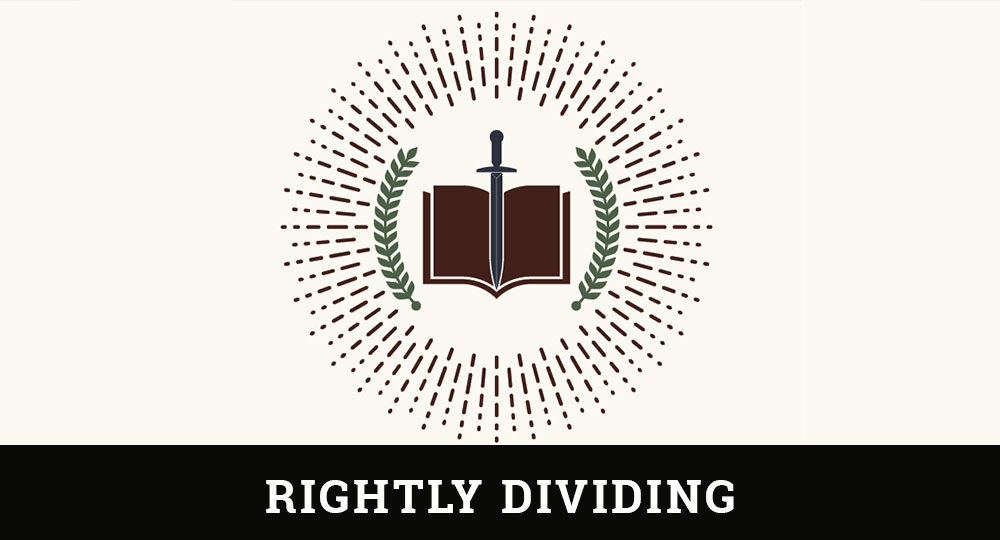The New Jerusalem
Revelation 21:9—22:5
To most people, the thought of home brings a feeling of warmth and comfort, a sense of security. It is a place where one can shut out the cares of this world and find a refuge for the soul during the pilgrimage through life. For Christians, however, this world is not our home; our citizenship is in the heavenly Jerusalem. Although we are not home yet, our gaze is firmly fixed on that new Jerusalem, the final home awaiting us in heaven. In this section of Revelation, John was given a description of the new Jerusalem, the residence that awaits each believer in eternity.
A Sanctified City
One of the seven angels approached John and said, “Come here, I will show thee the bride, the Lamb’s wife” (v. 9).
The bride, the Lamb’s wife, is identified as “the holy Jerusalem, descending out of heaven from God” (v. 10). Why is the new Jerusalem called the bride, the wife of the Lamb? First, the city is beautifully adorned, as will be the church, Christ’s bride, at the marriage supper of the Lamb (19:7). Second, the city will be spotless and pure, like Christ’s church after it is glorified. The city is being compared to a bride in its beauty and intimate relationship to Christ, the Lamb of God. It should be understood that John is not saying that the bride is the new Jerusalem, but it is being characterized as “the bride, the Lamb’s wife.” The bride figure cannot be limited to the individuals who will live in the city. It must also include the literal city with its physical characteristics (Robert L. Thomas, Revelation 8–22, An Exegetical Commentary, p. 460).
The angel carried John “away in the Spirit to a great and high mountain, and showed [him] that great city, the holy Jerusalem, descending out of heaven from God” (v. 10). John was supernaturally transported out of the material world fully awake (in a trance-like state) to receive the revelation and record a description of the new Jerusalem. The city’s description is not a symbolic expression, but a real material city that will exist throughout eternity. We cannot perceive or understand the new Jerusalem in its fullness because it is the creation of an infinite God. What John saw transcended any earthly experience known to mankind. Nevertheless, it is an accurate description of a literal city because it was revealed by the Holy Spirit.
The city will shine with “the glory of God” (v. 11), like the Shekinah glory that filled the holy of holies in the Tabernacle and Temple. Its brightness “was like a stone most precious, even like a jasper stone, clear as crystal” (v. 11). The jasper stone is like transparent crystal, similar to a diamond, whose facets sparkle with every color of the rainbow. The jasper stone is “most precious” because of its beauty and cost and will be extensively used in making the new Jerusalem (v. 19).
Some scholars believe that the new Jerusalem will descend from heaven and hover over the Millennial Kingdom as a satellite city of the glorified church during Christ’s thousand-year reign. Scripture offers no evidence for this position. The new Jerusalem is presented here as it will be in the eternal state, not in the Millennial Kingdom.
A Spacious City
John described the various components of the city. He described its walls as “great and high” (v. 12). It is obvious that high walls will not be needed for defense because the city will have no enemies. The walls will be symbolic of God’s protection and security and the exclusion of all that is evil (cp. v. 8).
The city will have 12 gates, each one inscribed with the name of one of the tribes of Israel (v. 12). The text does not reveal the order in which the tribes’ names will be placed on the gates of the new Jerusalem, but it could correspond to the pattern presented in the millennial Jerusalem (v. 13; cp. Ezekiel 48:31–34). An angel will be stationed at each gate as an honor guard, stressing the security of both the city and God’s glory (v. 12).
The city will have “twelve foundations, and in them the names of the twelve apostles of the Lamb” (v. 14). The mention of one of the twelve apostles on each foundation links the church to a major role in the new Jerusalem. Although Israel and the church are brought together in the New Jerusalem, they will have distinct identities in eternity and should not be lumped into one group.
The angel measured the “city … gates … and … wall” with a “golden reed” (v. 15). Its size will be “twelve thousand furlongs” (v. 16). It will be shaped in a perfect cube of almost 1,400 miles on each side and 1,400 miles in height (rounded off to 1,500 miles by many commentators). Although the city is described in square dimensions, nothing is revealed regarding its shape. Most interpreters hold that the city will be a perfect cube.
Next the angel measured the city walls, which were “an hundred and forty and four cubits, according to the measure of a man” (v. 17). Assuming that a cubit is 18 inches, the wall would be only 216 feet high extremely small for a 1,400 mile-high city.
John was given a description of the materials used to construct the city. “And the building of the wall of it was of jasper; and the city was pure gold, like clear glass” (v. 18). Together, the walls of jasper and the city of pure gold would look like a sparkling diamond in all its crystalline beauty, designed to reflect the effulgence of God’s radiant glory in every area of the city.
A further description was provided of the materials making up the foundations, gates, and streets of the city. There will be twelve foundations, “garnished with all manner of precious stones” (v. 19). Each foundation will be made of one of the following stones, layered on top of the next, extending around the city, as described in verses 19–20.
The jasper stone is clear crystal, like a diamond, and refracts all the colors of the spectrum in wondrous brilliance. The sapphire is blue in color (possibly flecked with gold). The chalcedony is a translucent milky or grayish quartz with colored stripes running through it. The emerald is a brilliant, grass-green, transparent variety of beryl. The sardonyx is an onyx stone with alternating brown and white bands running through it. The sardius is a translucent red stone, like a ruby. The chrysolite is gold in color, resembling a golden jasper stone. The beryl is a translucent bluish or sea-green colored stone. The topaz is a translucent yellow or yellow-green stone. The chrysoprasus is a translucent apple-green stone. The jacinth is a translucent, bluish-smoke, violet-colored stone. The amethyst is a brilliant purple or violet transparent stone.
The twelve foundations will be structured to refract the effulgence of God’s glory and holiness. Such beauty will transcend anything mankind has seen since the inception of God’s creation.
There will be “twelve gates” (v. 21), each made of one huge pearl, attached to the city walls that will open into streets made of “pure gold, as it were, transparent glass” (v. 21). Pearls were highly valued in the ancient world for their natural beauty. Each pearl gate will bear the name of one tribe of Israel, and these gates will never be closed.
A Spiritual City
After describing the dimensions of the city, John detailed some of the city’s distinctives. He said, “And I saw no temple in it; for the Lord God Almighty and the Lamb are the temple [sanctuary] of it” (v. 22). In eternity, there will be no need for a Temple because God Himself will dwell in the midst of His people, who will have direct, immediate, and intimate communion with Him.
The city will have no need of creative light from the sun or moon because “the glory of God did light it, and the Lamb is the lamp of it” (v. 23). God’s glorious presence in the city will illuminate every corner of the new Jerusalem; nothing will be hidden. Scripture does not say that the sun and moon will be absent in eternity, but that there will be no need for them.
All the “nations … who are saved shall walk” in the physical and spiritual “light” (v. 24) of God’s glory. The word nations means Gentiles and is used, not in a political sense, but referring to saved Gentiles living in the eternal state who are not part of Israel or the church. At that time, “the kings of the earth do bring their glory and honor into” the new Jerusalem (v. 24). Those holding positions of honor among the saved Gentiles in eternity will give their glory and honor, once it is bestowed upon them, to God the Father and Jesus Christ.
John recapped what had already been alluded to: “And the gates of it shall not be shut at all by day; for there shall be no night there. And they [kings] shall bring the glory and honor of the nations into it” (vv. 25–26). The city will be open to all believers.
Nothing of an evil nature will ever enter the city. John wrote, “And there shall in no way enter into it anything that defileth, neither he that worketh abomination, or maketh a lie” (v. 27). Only the redeemed, whose names “are written in the Lamb’s book of life” (v. 27), will be there.
A Sinless City
John then divulged the paradise qualities of the new Jerusalem. That which was lost in the Garden of Eden, because of mankind’s sin, will be recreated by Jesus Christ. The angel revealed to the apostle “a pure river of water of life, clear [i.e., bright and shining] as crystal, proceeding out of the throne of God and of the Lamb” (22:1). This will be a life-giving river, providing those living in the city with a deeper quality of spiritual life and symbolically portraying the eternal life manifested to them in eternity. This river will flow “out of the throne of God and of the Lamb” (22:1), indicating that Christ will be enthroned with God the Father in eternity.
John’s attention was then drawn to “the tree of life” (v. 2) located in the middle of the street, whose branches will be large enough to spread on both sides of the river of life. The “tree of life” will bear “twelve kinds of fruits, and [yield] her fruit every month” (v. 2). This tree will produce an annual harvest of twelve different fruits. The mention of twelve months would indicate that time will be calculated in eternity.
The “tree of life” was first seen in Genesis 3:22. Adam and Eve were driven from the Garden of Eden so that they could not partake of the tree of life. By eating from the tree, they would have lived eternally in their natural bodies, which possessed the sin nature.
Leaves from the tree will provide “healing [for] the nations” (v. 2). The word healing comes from a Greek word that means therapeutic or health-giving. There will be no disease in the new Jerusalem because the “curse” (v. 3) will be removed; therefore, the leaves will, in some unknown way, enhance the joy of life in eternity.
John said, “the throne of God and of the Lamb shall be in it [the new Jerusalem], and his servants shall serve him” (v. 3). Eternity will not be a place of idleness, boredom, or wearisome labor, but of joyful service and worship.
In eternity, believers will be able to “see his (God’s) face” (v. 4). God told Moses, “Thou canst not see my face; for there shall no man see me, and live” (Ex. 33:20). Jesus said, “No man hath seen God at any time; the only begotten Son, who is in the bosom of the Father, he hath declared him (Jn. 1:18). Believers will be able to look on His face in the new Jerusalem because they will be in their glorified bodies. They will be easily identified because God’s “name shall be in their foreheads” (v. 4). This is a seal of ownership, showing that they are God’s possession, identifying them as citizens of the new Jerusalem.
John concluded by revealing the greatest privilege of all for glorified believers: “and they shall reign forever and ever” (v. 5; cp. 3:21; 5:10; 20:4, 6). What a glorious promise to believers! Only eternity will reveal the exact role and responsibility of glorified believers in ruling and reigning over the universe. What a blessed new home awaits believers in eternity!







There’s confusion of “replacement-theology” in some of this article and comments listed here

Please consider this explanation for clarification about who will be in New Jerusalem :
The word “church” is derived a Scandinavian root-word which translates to “power-circle, circus” and is unlike the true biblical, original Greek word, “Ecclesia,” which means “called out, governing authority”
So the “called out” did not begin with Acts 2 or 9 (the “church”) – the “called out” began with the father of the faith of ABBA’s “chosen people,” Jew & Gentile, One in Messiah, and that father’s name is Abraham
The wife/bride of Messiah is not exclusive to any one denomination – ALL the redeemed of all ages will live in the Holy City!
Remember the saved Gentiles, the grafted-in wild branches, are and were called to be of the same one family and household as the Jews (Eph.2:11-22)
Amen! To all you said. The very reason religious Pharisees could not accept Jesus was they would not accept the conditions of the new covenant in His Blood.
Behold! The Lamb of God that taketh away the sins of the world!” He was and is a propitiation for all our sins.
He was the pure spotless Lamb of God , prepared for the slaughter to atone for the sins of all mankind. His perfect life, shed blood, death burial.and resurrection
Made perfect atonement and It pleased The Father to bruise him, and by His stripes we are healed. The thing that was unclean has now been proclaimed clean in God’ s eyes!!!! If the thing that was made will believe and turn to God , through His chosen vessel of Atonement The Holy Lamb of God Messiah! And be Born again of His Spirit. They are now called children of God by which we cry “Abba Father!!! What was far off , has now been brought near. The devil has been busy since the Church in Jerusalem’ s at it’ s inception to cause division amongst Jew first and then Gentiles. I sometimes wonder what sort of wonderful things we would have accomplished with our born again Jewish brothers and sisters in Christ had not we been seperated by confusion and traditions of men and sin, the world and the devil? Alas.. But God knows all things and nothing is hidden from His eyes. I am sure that His desire was that Jew and Gentiles would worship togethor celebrating the manifold things of God lighting up this dark world in Spirit and in Truth. Sadly that has not happened in these 2 millenia..But God!! And by God!, He will have this accomplished .
Thy will be done Thy kingdom come on earth as it is in heaven.
The New Jerusalem consisting of believing Israel and the church TOGETHER continues into the eternal condition – that is what Rev 21.1 tells us.
Does everyone who has ever believed in God for their salvation (OT), or in Jesus Christ (NT), or who came to faith during the Tribulation, live in the New Jerusalem? (i.e., all believers)
Or is it only for believers from the Church Age?
It’s the residence of the bride, which is only made up of believers saved during the church age. The resurrected Old Testament saints may visit there but they won’t reside there. The patriarchs, Abraham, Isaac and Jacob, were given the land covenant so they will reside on earth in Israel but New Jerusalem isn;t on earth; it hovers above earth over Israel. Jesus will reside with His bride in New Jerusalem but He will rule from the throne of David in Jerusalem. In Revelation 21:2, 7, notice John described the city coming down but nowhere does he describe it having lit on earth. Look at the dimensions of the city; based on 1400 miles long x 1400 miles wide x 1400 miles high, the city encompasses 2, 744,000,000 square miles. Yes, that’s 2 BILLION 744 million square miles. Israel is approximately the size of New Jersey. Even when it occupies the entire territory which God deeded to it Neww Jerusalem would dwarf the nation. In terms of the United States, if New Jerusalem were placed on the map, its north/south borders would extend from Maine to Florida, from east/west it would extend from North Carolina to Colorado. New Jerusalem simply wouldn’t fit in the state of Israel.
This is some serious personal inference. Dispensationalism is only less than 200 years old dating back to John Darby and the Plymouth brethren. Don’t try force man’s doctrines into the Holy set apart Scriptures.